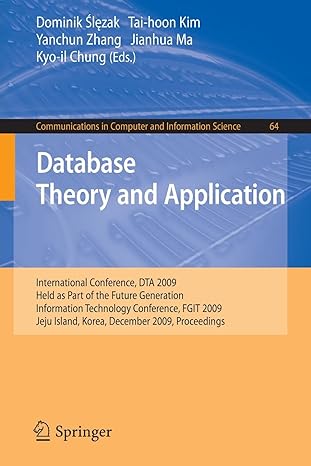Answered step by step
Verified Expert Solution
Question
1 Approved Answer
The codebase comes with the following features with particular Flutter packages, including: State management and dependency injection functionalities using Provider 4 . 0 Sending (
The codebase comes with the following features with particular Flutter packages, including:
State management and dependency injection functionalities using Provider
Sending and receiving HTTP requests and responses using HTTP package
Service locator using Getit package
The codebase has been structured with an MVVM architecture which consists of the following components:
model see file libmodelsnotedart
service see the file libservicesnotenoteservice.dart
viewmodel see file libscreensviewmodeldart
view see file libscreensviewdart
Question
Using the Flutter framework and an MVVM architecture, develop a mobile application that provides basic features for note taking such as fetching notes from a database, adding new notes, updating and deleting notes.
Details of requirements of the application are given in the following subsections. Some of them have been provided in the codebase and you are not expected to anything on them. Things that you need to accomplish in this exercise are labelled as tasks, for example Task Task and so on
Model
A model class named Note has been provided in the codebase. See the file libmodelsnotedart. You are not expected to do anything on the file. However, if you need to add something to the class, you may do so This is the only model class needed in this project.
Database and Data Service
As for the database, you will test the application on two types of databases:
a mock database.
The database is stored internally as a list in memory. You should expect that the data will be lost once the app closes.
a RESTful database.
The database is stored in a real database system. That means, all changes made on the database will remain after the application closes. Here, you will be using a local JSON server for provisioning the backend RESTful service. A sample database has been provided for this purpose in the codebase see the file backendjsonserverdbjson
Regarding the two types of databases above, you will need to test only one type of database at a time. That means, you will need to switch services from one to another and this can be done simply by hard coded in the service registrations see file libappservicelocator.dart
Task
Define two service classes below:
a
Mock service with internal memory database
Complete the file libservicesnotenoteservicemock.dart
b
RESTful service
Complete the file libservicesnotenoteservicerest.dart
Two classes have been provided in the codebase to help you accomplishing this task, NoteService in noteservice.dart an abstract class for the two services above to extend from, and RestService in rest.dart to handle communications with the backend via the REST style.
Viewmodel
You should separate code about business logics and state management from the user interface code. In this regard, put those code into viewmodels. You will need to define only a viewmodel for this project.
Task
Define a viewmodel for the main screen. Complete the class in the file libscreensmainmainviewmodel.dart. The class should include:
a method that handles fetching notes
a method that handles adding a new note
a method that handles deleting a note
e
a method that handles updating a note
You may add any additional attributes and methods to the class whenever necessary.
User Interfaces and Views
The application has only one screen, which is composed of three main components, app bar, body and floating action button as shown in Figure The app bar is composed of an application title and the number of notes. The body is composed of a list of tiles. Each list tile can be of a normal list tile which shows the notes information Figure or an editable list tile in which allows editing Figure The floating action button component consists of only a button.
Task
Define all the views of main screen which include following.
a
App Bar
Complete the file libscreensmainmainappbar.dart
b
Body
Complete the file libscreensmainmainbody.dart
c
Note Tile for regular or normal list tile
Complete the file libscreensmainnotetile.dart
d
Note Editor Tile for editable list tile
Complete the file libscreensmainnoteeditortile.dart
e
Floating action button
Complete the file libscreensmainmainfloat.dart
Task
Implement the operations of the application:
a
When a note tile is long pressed it will switch to an editable list tile allowing the user to edit the note. Long pressing on the same note tile will switch back to a normal list tile.
b
In editing mode, the note can be edited and it will reflect the changes on the user interface as well as in the database.
c
When the delete button is tapped on it will remove the note from the database and reflect the changes on the user interface.
d
When the add button is tapped on it will a new note into the database and reflect the changes on the userFigure : Main components
Step by Step Solution
There are 3 Steps involved in it
Step: 1

Get Instant Access to Expert-Tailored Solutions
See step-by-step solutions with expert insights and AI powered tools for academic success
Step: 2

Step: 3

Ace Your Homework with AI
Get the answers you need in no time with our AI-driven, step-by-step assistance
Get Started


